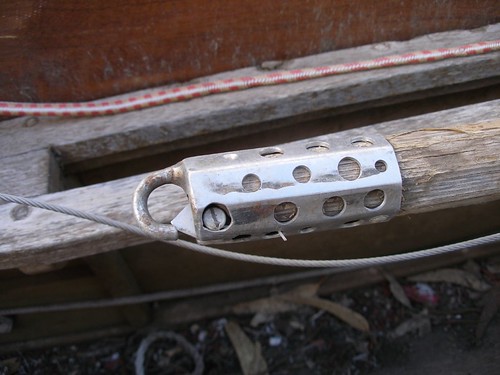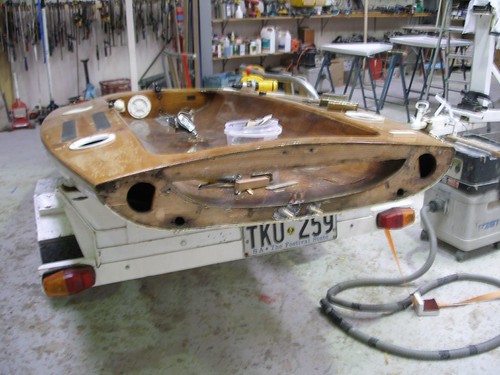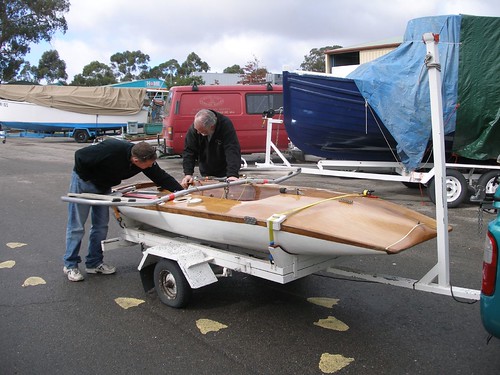
While in Port Vincent for the Wooden Boat Festival (great little show!!!) someone pulled out this 1950s wooden 505 class dinghy.
It is in REALLY bad condition – but the exciting thing is that it has all the original gear and fittings.
So it is a time capsule from around 1959. “State of the Art” down to the snubbing winch mounted over the centrecase to take the spinnaker sheet. Didn’t they know about Ratchet blocks!!!
This is a bit of a companion piece to one I am working on now which will be up later tonight.

Most of the components on this 505 can be built or repaired by an amateur. I’ll grant that the hull may have been a bit tricky – but there were a number of other classes with advanced performance that were simple plywood – Australian Lightweight Sharpie or NS14 or Gwen 12.
Anyway I grabbed a good number of Photos of the 505 and put them here
A week later I was up at Duck Flat and a guy rocked in with a Mouldie Moth – ie a cold moulded round bilge International Moth. This was the first evolution from the original boxy Mk2 Moth also in the early ’60s.

This one has had the wings added later and the rig is not the original which would have probably been a “hockey stick mast” with a sock luff sail. The top third of the mast was laminated wood with a pronounced backward curve. Sail number (a plate on the hull) is 5005.
A little later they went back to a plywood double chine design that simulated the hullshape, was easy to build and was just as fast.
The Wooden Moth ended up being the most sophisticated wooden sailing machine on the face of the earth.
Where this Mouldie would have been around the 65 or 70lb mark the last generation of plywood boats in the mid ’80s were down the 32 to 34lb mark (that’s about 14kg).

They did this by going to 0.7mm plywood for the hull (1/64″) and about 1.5mm for the deck (1/32″) – the cockpit had a thin layer of glass on the underside to prevent the ply from breaking because of clumsy knees from the crewman. The thin skin was supported by a network of bulkheads in the thinner ply and numerous cedar stringers about 24 x 8mm.
Australians and New Zealanders were really good at light wooden boat construction. Still are actually – it is our dominant wooden boatbuilding tradition.
Top level racing life of such boats was usually about 2 seasons with maybe a half decade of club use by someone less experienced after that.